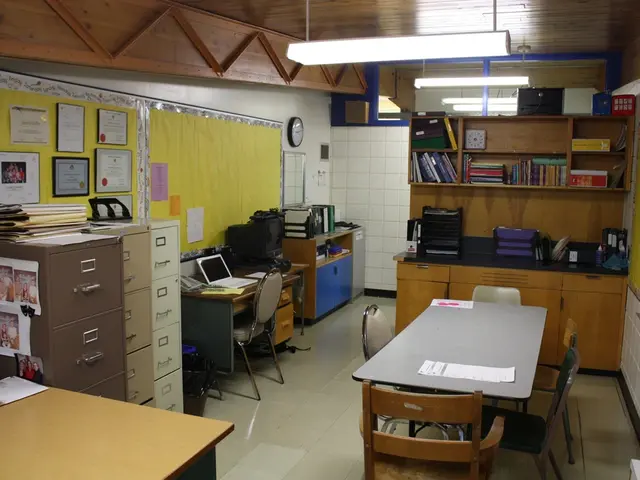Common oversights homeowners face when creating a porch and strategies to prevent them:
Sprucing up your home's entrance with a porch? Keep these common blunders in check to ensure a lasting impression. Here's what to avoid:
9 Porch Pitfalls to Avoid Like the Plague
1. Mismatching Your Home's Style
A porch that doesn't sync with the house it's linked to can seem disjointed. Opt for a design that melds well with the building's architecture. A porch should complement the house's character, from matching bricks to echoing window details.
Rachael Munby, CMO at Anglian Home Improvements, weighs in: "A common mistake a homeowner is likely to make is not considering matching the design of their porch with the existing architecture of the home. A porch should complement the house's style to look like an intentional addition rather than something 'tacked on.'"
2. Choosing Style Over Substance
Remember the importance of functionality. Your porch space should provide practical benefits, such as boot room storage, improved energy efficiency, or added security. Ask yourself if your design addresses the practical concerns that matter.
3. Lacking Harmonious Proportions
Balancing form and scale is essential. Oversized or understated features can sometimes make a structure feel awkward. Ensure columns, railings, furniture, and other elements are in proportion to your home's size.
4. Blocking Natural Light or Key Views
A beautifully crafted porch shouldn't come at the expense of light or line of sight. "Poor porch planning can negatively affect usability as it may block the amount of light that is coming into your home," explains Liam Spencer, owner of Northallerton Glass. "A darker home is not as desirable on the market compared to others, as natural light can make a property appear bigger and more inviting."
5. Gone too Dark with Lighting
Lighting plays a vital role in your porch's atmosphere, yet it often gets overlooked. Choose fixtures that emit warm, softer light. Avoid installing fittings that are too bright or poorly placed, causing glare and an uninviting look.
6. Neglecting Practical Depth
A porch needs enough space to be functional, whether for storage, seating, or room to move comfortably. Aim for a porch that's between six and ten feet deep. This offers enough space for furniture while ensuring it doesn't block light to windows.
7. Ignoring Landscaping Details
Your porch isn't an island; the surrounding areas, including paths, planting, and hard landscaping, matter too. Consider greenery, complementary materials, gravel borders, low hedging, or seating to ground your design.
8. Skimping on Home Security
"Porches are a key point of vulnerability for homeowners," explains Anthony Neary, security expert at Safe.co.uk. "It is often believed that by having a porch, the home itself is much more secure. However, it is important to secure both doors with strong, high-security locks, in particular, the outside door."
Install laminated or toughened glass for extra security and a video doorbell to keep an eye on who's approaching your home.
9. Overlooking Planning Permission
It's essential to check with your local authority regarding planning requirements, whether your porch height, location, or whether the property is listed impacts the regulations. Ignoring building rules can result in delays and unexpected expenses.
Always double-check planning permissions and consider how much a porch may cost before your design gets underway.
- When planning for a new insulation system, consider the design's compatibility with your home's existing architectural style to maintain a seamless look.
- In the process of redesigning a home, prioritize functionality over aesthetics, ensuring that spaces like the roof, doors, and windows offer practical benefits like energy efficiency and storage.
- During home improvement projects, remember to maintain harmonious proportions to prevent features from appearing oversized or understated.
- To enhance the lifestlye and ambiance of your home, select lighting fixtures that emit warm, softer light and ensure they're placed thoughtfully to avoid glare and harshness.
- A home project guide for home-and-garden enthusiasts should emphasize the importance of proper planning to minimize the risk of blocking natural light or key views.
- When designing a new porch or home improvement, aim for a balance in depth by allocating sufficient space for practical use, such as boot room storage or seating.
- In addition to landscaping the porch itself, consider extending the project to include gardening ideas for the surrounding areas, such as planting, paths, and hard landscaping.
- While planning a project, invest in secure doors and accesorize them with high-security locks to minimize vulnerabilities, especially for listed properties or properties with specified regulations.
- When engaging in a home improvement project, always research and adhere to local regulations and building codes to avoid costly delays and unexpected expenses.








